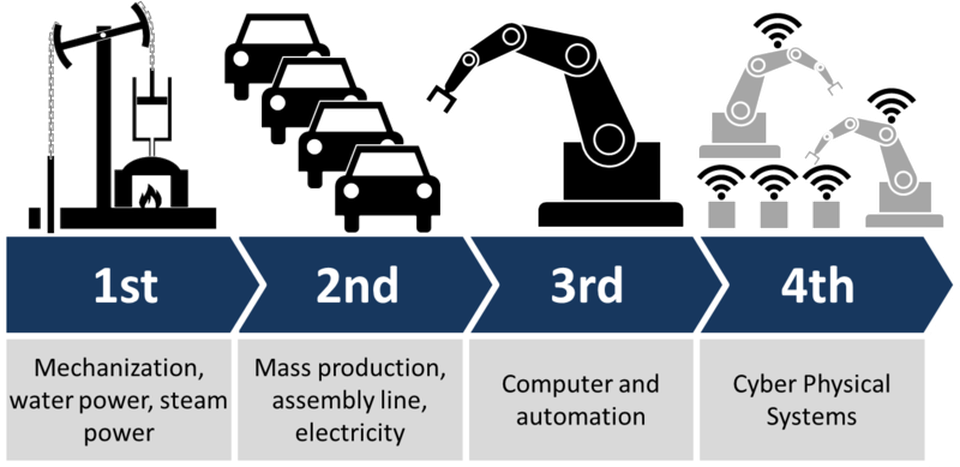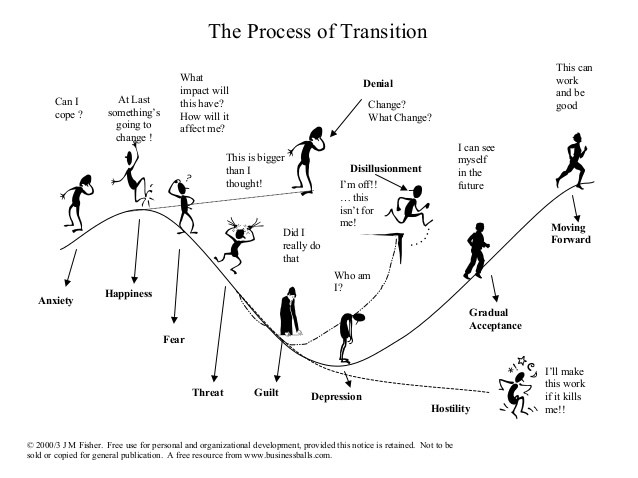Mind the ‘Change’ Gap!

John Pepper outlined the opportunities and challenges presented by The Fourth Industrial Revolution in our last newsletter. In part 2 of his article below, John examines how ready and able we are to embrace ‘change’ at both an organisational and personal level to meet the challenges posed by this revolution.
What constitutes ‘Change’?
Change means, for example, taking a different position, course of action or direction; replacing something; switching from one way of thinking to another; modification of or exchanging ideas for a different approach or transferring our thoughts from one perspective to another. Change happens continuously in our lives at a personal level, with some decisions involving taking risks financially; for example moving house or changing the vehicle we drive, both of which will involve discussions with a spouse or partner; whereas other changes happen with little thought or risk, such as deciding which seasonal fruit to buy at the supermarket.
Change manifests itself in many ways in organisations; it may be transformational, incremental, developmental, remedial, structural, cultural or behavioural. All these will affect the culture and the people in that organisation. It is often said that organisations that are not adapting to ‘change’ are effectively moving backwards! We are witnessing this at present with what is happening to many retail businesses on the High Street in the UK, for example.
‘Change Management’ is a structured approach to moving an organisation (and its people) from its current state to a desired future state. Factors acting as a catalyst for change include dissatisfaction with the current situation, desirability of the proposed change and the practicality of the proposed change. That said, people are adaptable but do react to change in different ways. This is often due to the ‘psychological contract’ between people and their employers which includes considerations such as working conditions, rewards (pay and bonuses), holidays, relationships, job satisfaction and value, and personal standing or prestige. However, people will react differently, especially if change is ‘imposed’ on them.
One important consideration in planning ‘change’ is the level of aversion to risk that may exist at the individual and collective level within an organisation. With any change, people will likely present arguments against change that include one or more of the following; that they do not believe the change will work, they consider the old ways are better, they are concerned that they might fail to make the change, there is a lack of trust in the change ‘agent, or that the pain of change is greater than staying the same!
Resistance to change manifests itself in either an ‘active’ way, with people being critical and finding fault, manipulating the argument or blocking or ridiculing, or in a ‘passive’ way, when resistance involves people providing verbal agreement but failing to deliver, withholding information, selecting what they want to hear, procrastinating or simply ignoring the argument for change. Figure 1 shows what transition stages the human brain goes through when confronted by any change, such as a new idea, challenge or a threat to their status-quo. This process can last a few seconds or much longer dependent on the individual.

The culture of the organisation will dictate how change is implemented. It may be nimble or ‘agile’ with a culture for ‘change’ to modernise, for example, overhaul its processes and drive efficiencies; or it may be risk-averse with no culture for ‘change’. This is often the case where the core business has remained unchanged for many years or where the structure of the organisation does not empower its people to input to the process.
How does an organisation cope with ‘change’ necessary to meet the challenges of The Fourth Industrial Revolution? There are a few simple but important steps to take to ensure ‘change’ can be successfully delivered. You can start by ‘setting the stage’ for change and then creating a sense of urgency by helping others embrace the need for change. Once you have the end-outcome in mind, bring together the ‘guiding team’, comprising those individuals with leadership skills, credibility, communications ability, authority and analytical skills. Don’t forget to get buy-in from your director! Together you can decide what is necessary to develop your company vision for change and develop a strategy to make the future a reality.
The guiding team needs to communicate with all colleagues to get their understanding and buy-in, as well as acceptance of the vision and strategic approach. Empowering others to act by removing barriers will ensure that those who want to make the vision a reality can engage in the process. It is important to produce short-term successes on which you can build and initiate further change until the vision becomes reality. By doing this, momentum is maintained by all to work towards replacing the old ways of doing things and ensuring the change ‘sticks’.
The Fourth Industrial Revolution will provide a significant driver for change over the next decade, as new technologies gain momentum blurring the lines between the physical, digital and biological spheres across all sectors. Technologies like artificial intelligence (AI), nanotechnology, quantum computing, synthetic biology and robotics will all drastically supersede any digital progress made in the past 60 years and create a world that we previously thought impossible. Such profound realities will disrupt and change the business model of each and every industry. We are witnessing the human impact in the workplace already as a result of the advancement in professional services, such as accountancy and law, through to retail and manufacturing. Organisations are revisiting the way they integrate technology which will no doubt lead to a significant reduction in employee numbers. At the same time, changes are needed now to education systems to prepare the next generation for the likelihood of them engaging in a very different work place and labour market.
We all need to adapt the way we view and handle change if we are to successfully deliver it. If we do not then we will be left behind.
For more information, please click here






